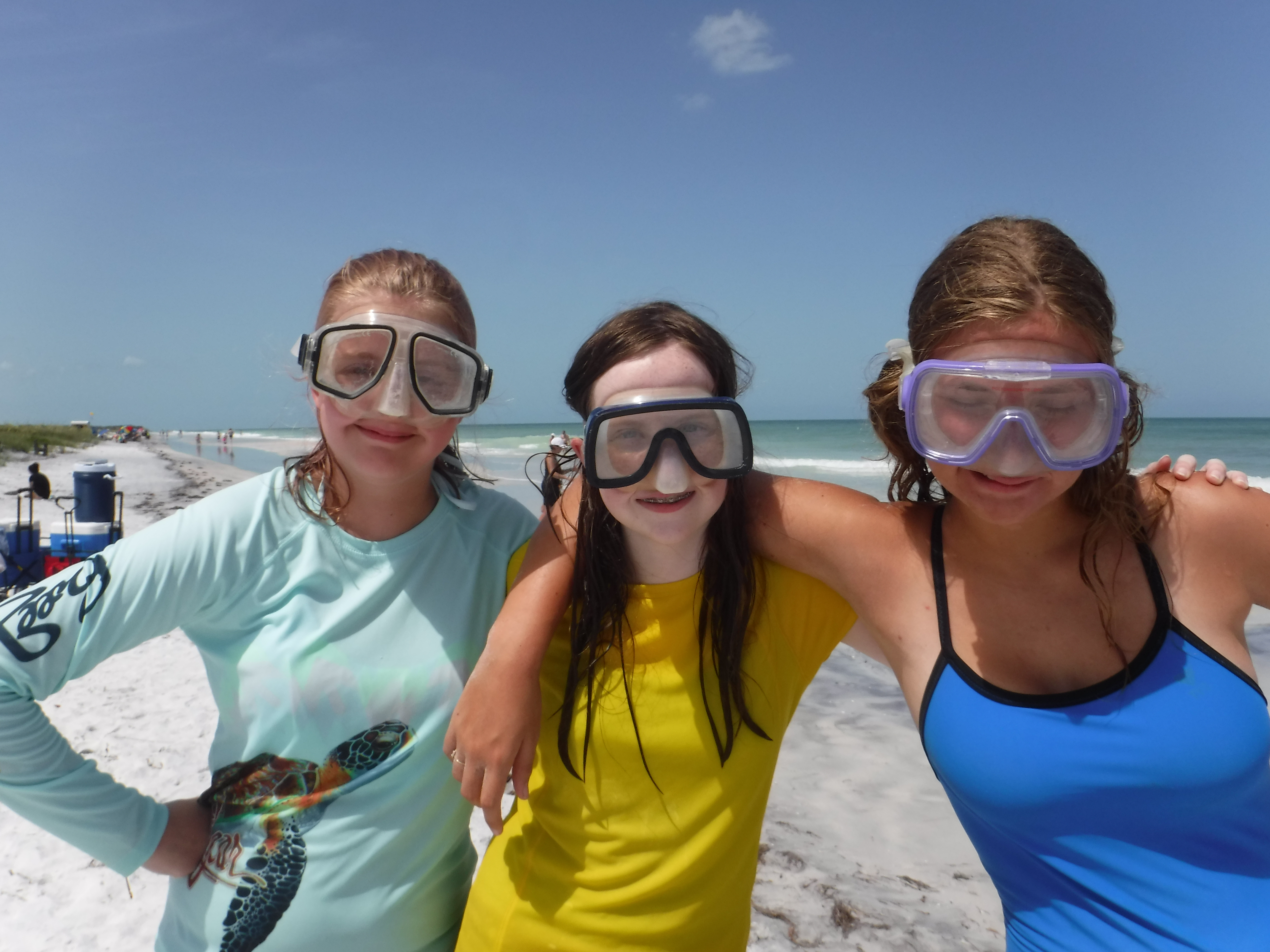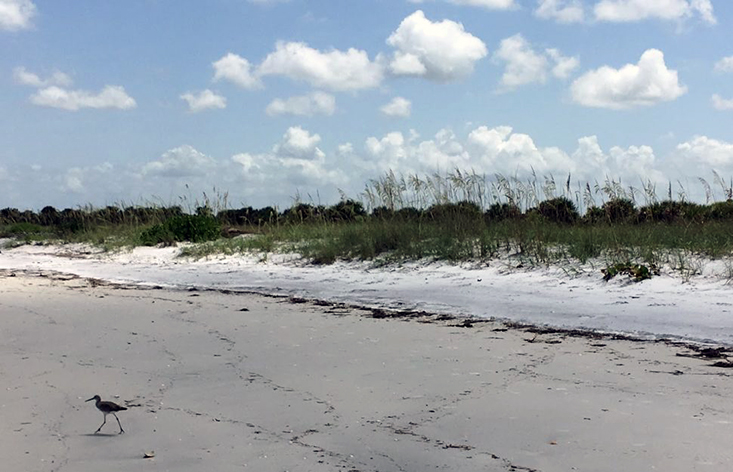Blog post by Marcy Cockrell & Makenna Martin with photos provided by OCG Staff.
The trip to Caladesi Island is the final field trip of OCG, and focuses on physical coastal processes and beach ecology, especially the beach sand dunes. We had a beautiful day for this year’s trip, and refreshing waves to splash in! The campers start the day by taking a ferry over to Caladesi Island, docking in the mangroves, and taking a short walk down to the beach with all the gear. Once on the island, girls get a quick introduction to what activities they will be doing for the day, then split up into 4 groups.
At the first station the girls learn about physical ocean processes such as wave energy, wave height, and longshore currents. The girls use a yard stick to measure wave height, and get to see longshore currents and wave energy in action with a special fluorescent dye that they release into the water – always a camp favorite!
Next, the girls learn about sedimentary structures – what the beach looks like under the top layer of sand. The girls recalled what they learned about sediment structures from last week’s field trips and the career day trip to United States Geological Survey (USGS). They were able to identify storm events preserved in the sand, looked at sand grains up close, and sieved through the sand to observe the sediment composition. The girls learned a new technique to observe sediment too – using their teeth! (A process known to geologists as the bite or grit test: a bit of sediment on the teeth will feel different depending on what the sediment is made from. Sand feels gritty, silt feels smooth, and clay feels powdery – not a distinction that is easily made from using your hands)

Using googles to see how the current can move objects underwater along the shoreline
The third station is all about plant adaptations. The girls talk a short walk into the dunes to learn about how plants have adapted to the salty, sunny, and hot environment of Florida beaches. From sea oats to prickly pear, the girls observe root, leaf, and flower structures that allow the plants to survive and thrive here.
At the final station, the girls take measurements of dune height using a stadia rod and eye level. The stadia rod gives a measurement of how high above the water line the dune is. Each group takes a measurement at a different part of the dune, working from the back dune to fore dune closest to the shore. During camp wrap up, the girls will use these measurements to make a profile of the beach.
It was a great day of learning!
